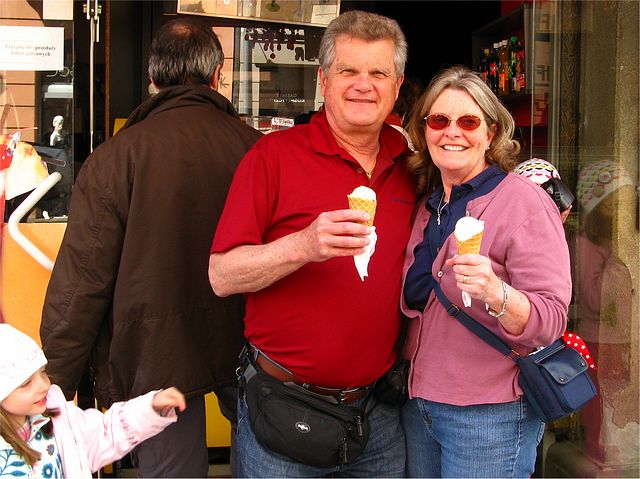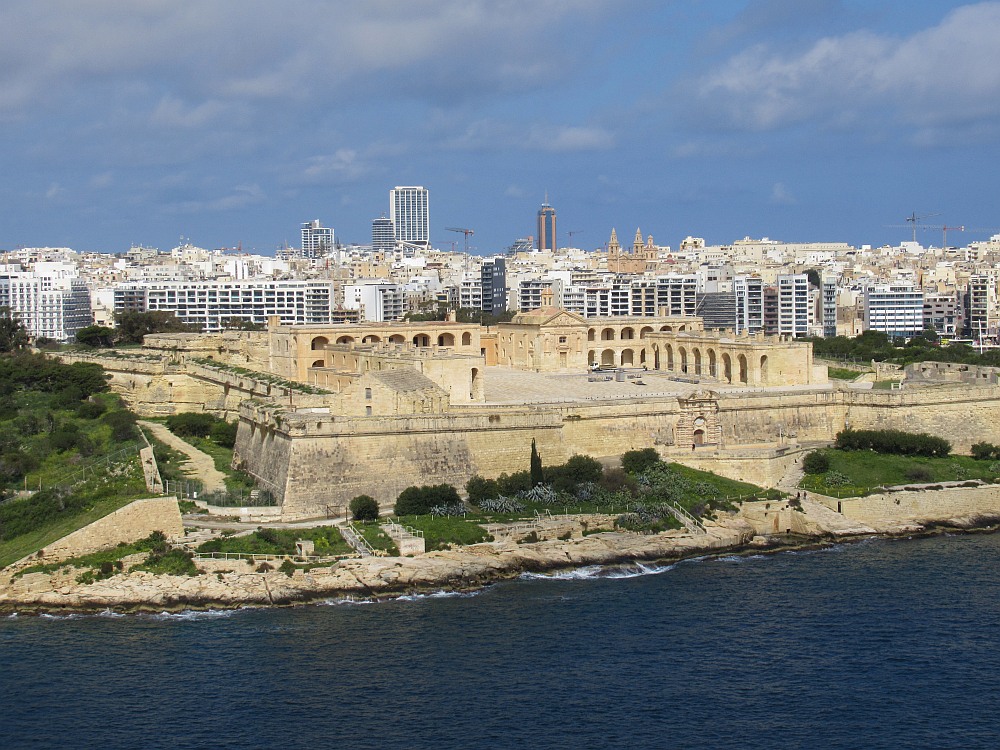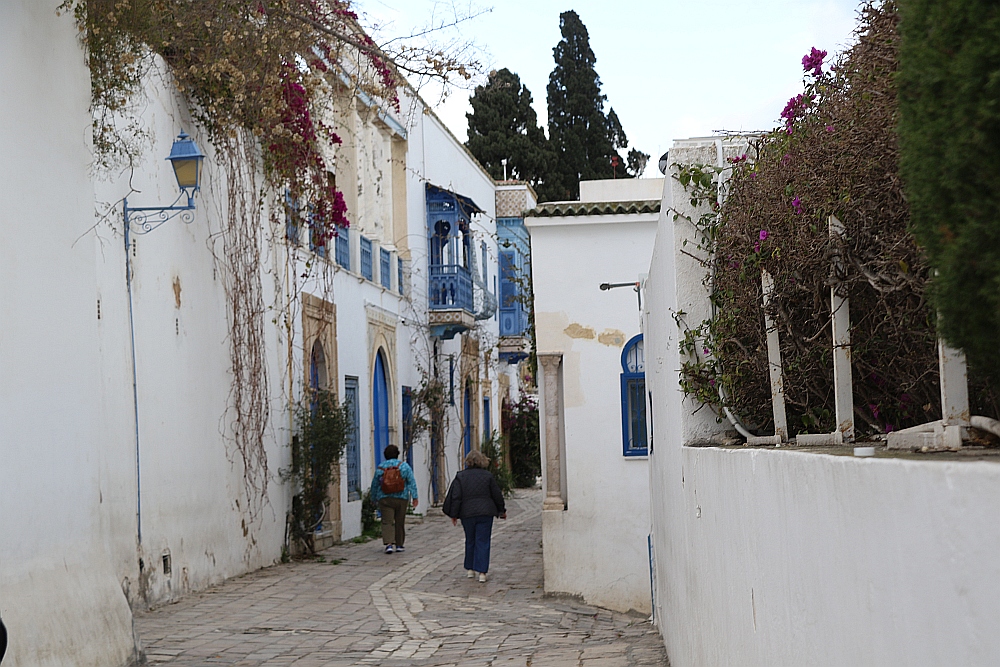Highlights E Europe Day 10
Highlights E Europe
Day 10 – Saturday, May 8, 2010 – Krakow, Poland. Wieliczka Salt Mines Tour, City Sightseeing Tour, and Polish Folklore & Dinner
We woke up at 6:15 to a thick fog with the temperature at 56º and the humidity was 97%. By the time we had our breakfast and were on the bus, the sun was beginning to peek out for another beautiful day in Poland.
Eva had warned us that we needed to be on time today because of our scheduled early appointment at the Wieliczka Salt Mines. Not only was everyone on time – but we were also able to leave three minutes early.
We traveled south east of Krakow to visit the 14th Century mines of “white gold” – the Salt Mines. On our way out of town Eva pointed out a monument of the Plaszow Concentration Camp that was featured in the movie Schindler’s List. She promised to stop on our way back so we could take a photo.
In order to take photos in the Salt Mines, one must buy a permit. Eva passed around a list and a plastic bag for our 10 Zlotych making it possible to get this organized as quickly as possible.
Salt is no longer mined there but the carvings and statues done by the miners are now a UNESCO World Cultural Heritage Monument and one of the most famous attractions in Southern Poland. Over one million visitors come here each year; one of the first and early visitors was Copernicus who visited the mines in 1492.
The air in the mines is very pure; in fact there is an underground sanatorium to treat people with asthma and allergies because there are no bacteria in the mines. Our guide, Joanna gave us additional information about the mines and what we could expect on the tour.
Eight of us got into a small cage like lift that took us down to 135 meters below the ground. Joanna gave us a talk about safety, the most important being to stay with the group as she knew the way out!
Today on our tour we saw only about 1% of the total mines, but we walked and walked through underground chambers. They are all stabilized with salt pillars and also wooden logs for support.
Most of the salt is dark in color because it has many impurities. Only the white cauliflower like crystals are white and more pure and are found when water seeps through the earth and then evaporates.
Carvings along the route and in the many chambers depict fairy tales and the models explain the work of the miners.
The highlight of the tour was St. Kinga’s Chapel carved into the solid rock salt. Begun in 1896, it took 3 men 6 years to finish the project. There is a new stature of Pope John Paul II that was added in 1999.
After our tour, we met Eva at 10:45 and went back to the hotel to pick up those who did not go on the morning Optional. On the return trip, Eva was good on her promise and Paul stopped so we could take a photo of the Plaszow Concentration Camp site.
Eva also gave us a little history of the devastation to the Polish population during WWII. Poland lost over 6 million people killed in the war; 3 million were Jews of Polish origin and 3 million were Polish Poles.
We met our local guide Eva, another Eva… who began a description of the highlights on our city tour. We traveled to the Jewish Town first where Jews lived from the 14th to the 18th Centuries.
Eva pointed out many of the buildings used in the filming of Spielberg’s movie, Schindler’s List. There were formerly many synagogues in this section of Krakow, but now only one remains but because it was Saturday, we were not allowed to visit it.
We made our way to the Ghetto where we saw the remaining portion of the wall and the Deportation Monument with its rows of empty chairs depicting the many Jews who waited at the train station for their evacuation and then train trip to the concentration camps.
Our next stop was the actual factory making enameled pots and pans for the German Army owned by Schindler and the site of his famous list of essential workers. He helped thousands of Jews to escape Nazi persecution. On the factory is a plaque reading “Whoever saves one life, saves the world entire.”
After that somber experience we drove to the Market Square area where we walked to tour St. Mary’s Cathedral. The beautiful altar was stolen by the Germans during the occupation and then with the help from the United States, it was restored to its rightful place in 1966.
At 2:00 the Evas gave us time for a late lunch and to look around and we met back at the church at 3:00. Gennie and I shared a fantastic Kabob and a soda and then we bought ice cream so our friend Don would know they have super ice cream in Poland!
Returning to the hotel, we caught up on photos and the journal and got ready for our Evening Optional, a Polish Polka Party and Dinner.
At 6:30 we met everyone in the lobby and drove to the tiny village of Szyce where we went to a small family owned restaurant called Under the Pheasants. Here we had a delicious dinner and fantastic entertainment.
I was able to go back into the kitchen and see the preparation of our dinners on a tiled wood stove. The owner was very gracious and the whole family made our evening one of the best on this trip so far!
Hotel: Park Inn Krakow (Buffet Breakfast)
Comments
Featured Journal
Day 18: Mediterranean Navigation
Day 18 - Wednesday, March 19, 2025 – Disembark Ship & Return to USA
It was a dark and rainy morning when we put our luggage outside of our cabin door at 4:15. We met three of our fellow passengers also on the same flight...










